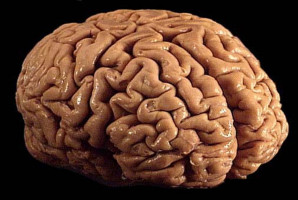
Chronic physical pain can be debilitating, but feelings of stress, fear, and hunger can sometimes suppress painful sensations.
Diverse neurons across different brain regions play a role in carefully orchestrating the pain response in animals.
Scientists at the Center for Neuroscience (CNS), Indian Institute of Science (IISc) have now found how these neurons work together to control chronic pain in mice, allowing them to cope with or suppress the pain.
Such insights can help researchers devise better therapeutic strategies for chronic pain management.
Arnab Barik, Assistant Professor at CNS, and his group studied mice with chemotherapy-induced peripheral neuropathy (CIPN) – a common but less understood side effect of chemotherapy, which leads to cancer patients becoming hypersensitive to external stimuli, like cold temperatures.
In a new study, they found that a brain region called the lateral parabrachial nucleus (LPBN) plays a key role in driving this phenomenon.
When LPBN neurons were activated, mice started licking their paws more frequently – an active coping strategy – in response to a painful cold stimulus.
The researchers found that these LPBN neurons act as a “relay junction” of sorts – based on the type and activity of the inputs they receive from different regions of the brain, they control how much pain the mice feel and how they cope with it.
Some patients suffering from arthritis or CIPN “feel” a lot more pain triggered by certain stimuli that healthy individuals generally don't feel.
The CIPN mice showed similar signs, according to Prannay Reddy, a former Master's student in Barik's lab and lead author of the paper.Barik’s lab and lead author of the paper.
“For us to feel pain in a situation where we shouldn't feel pain, something must go wrong in the brain. There should be more firing or misfiring [of neurons] in certain regions of the brain,” he explains.
Some of this increased firing in the LPBN could be due to excitatory neuronal inputs from the spinal cord, the team found, as activating these inputs led to increased licking behaviour.
In addition, the team found that when they activated inhibitory inputs from another brain region called the lateral hypothalamus – which is primarily involved in regulating feelings like stress and hunger – it reduced this cold-induced licking response and presumably the painful sensations as well.
The researchers discovered that both types of inputs converge onto the same set of LPBN neurons, which – based on the intensity of the inputs they receive – take the call on whether to reduce licking (when the pain is less) or increase licking (when the pain is more).
“As an example, if you're really, really hungry and you have back pain, you can still manage your back pain and go over finding your food,” says Barik.
“Now if you have an intense pain attack, where all these neurons are really stimulated, then you're not going to go look for food. The brain really computes that.” The brain's innate mechanisms that can help us judge the best course of action in these cases, according to Barik, involves regions like the LPBN, the spinal cord, and the hypothalamus.
Barik adds, however, that whether similar mechanisms are involved in other types of pain, like pain related to arthritis or diabetic neuropathy, is still unknown.
However, such findings take us closer to painting a more comprehensive picture of how the brain perceives and regulates pain responses.
“Pain is subjective for us, and we don't understand why it's subjective,” he says.
“These mechanisms can try to explain to us where the subjectivity arises from.”
We are an independent charity and are not backed by a large company or society. We raise every penny ourselves to improve the standards of cancer care through education. You can help us continue our work to address inequalities in cancer care by making a donation.
Any donation, however small, contributes directly towards the costs of creating and sharing free oncology education.
Together we can get better outcomes for patients by tackling global inequalities in access to the results of cancer research.
Thank you for your support.